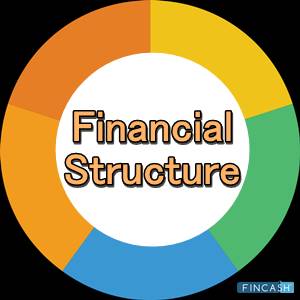What is a Financial Structure?
The mix of equity and debt that a company utilizes for financing its operations is referred to as financial structure. The danger and value of the related business are directly affected by this composition. The corporation's financial managers determine the appropriate debt-to-equity ratio to optimize the financial structure.

In general, a company's financial structure is sometimes referred to as its Capital structure. In some circumstances, assessing the financial structure may also include deciding whether to run a private or public company, as well as the financing prospects that each offers.
A Brief Understanding of Financial Structure
When it comes to establishing a corporate structure, companies have several options. For example, corporations can be private or public. The Basis for maintaining the Capital Structure is primarily the same in each situation, but the financing possibilities are vastly different. In general, a company's financial structure revolves around equity and debt.
Credit investors provide debt capital, which is then repaid over time with interest. shareholders contribute equity capital, which gives them ownership in the company and a return on their investment, which can be in the form of Market distributions or value gains. Depending on its demands, expenditures, and investor demand, each company has a distinct debt-to-equity ratio.
Talk to our investment specialist
Private vs Public
The framework for designing a company's structure is the same for both private and public firms, but few distinctions exist. For example, both sorts of businesses can issue stock. Private equity is formed and offered in the same way as public equity. Still, private equity is only available to a small group of investors instead of a public market on a stock exchange. As a result, the equity fundraising process differs significantly from a traditional initial public Offering (IPO).
Private companies can also go through many equities funding rounds throughout their existence, affecting their market value. Companies that reach maturity and decide to go public often enlist the aid of an investment Bank to help them pre-market the offering and value the initial shares. Following an IPO, all shareholders convert to public shareholders, and the company's market capitalization is calculated by multiplying the number of shares outstanding by the current market price.
Debt capital works similarly to credit, with private debt being issued to a small group of investors. In general, rating agencies pay more attention to public corporations, with public ratings assisting investors, and the market classifies debt investments. Thus, for both private and public companies, debt obligations take precedence over equity. Even if this lowers the risk of debt, private market enterprises should still expect to pay higher interest rates because their businesses and cash flows are less established, increasing risk.
Equity vs Debt
Financial managers might select between debt and equity when constructing a company's financial structure. The demand for both types of capital by investors can significantly impact a company's financial structure. In the end, financial management aims to finance the company at the lowest possible rate, lowering its capital requirements and allowing for more capital investment in the organization.
Overall, financial managers think about and review capital structure to reduce the Weighted Average Cost of Capital (WACC). WACC is a formula that calculates the average percentage of capital distribution required by a corporation to its investors. A weighted methodology that incorporates the pay-out rates of all of the firm's equity and debt capital yields a simplified calculation of WACC.
Financial Structure Analysis
The key parameters for examining the financial structure are essentially the same for both private and public organizations. The Securities and Exchange Commission requires public firms to publish public filings, providing investors with openness when assessing financial structures. On the other hand, private companies often only disclose financial statement filing to their investors, making it more challenging to evaluate their financial statements.
All efforts have been made to ensure the information provided here is accurate. However, no guarantees are made regarding correctness of data. Please verify with scheme information document before making any investment.












